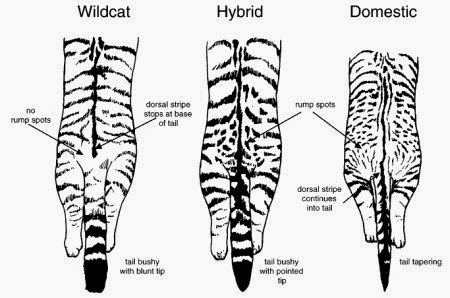
There is disagreement about how best to protect and conserve the progressively endangered Scottish wildcat. The Scottish wildcat is in a precarious situation. The species is becoming extinct and has been for many, many years. This is primarily because of breeding with outdoor domestic and feral cats leaving the Scottish wildcat non-purebred hybrids which are very similar in appearance to purebreds. In addition, disease, habitat loss and road traffic accidents have gradually decimated the population of this now very rare wild cat species.

As far as I’m aware, the experts don’t know how many, if any, purebred Scottish wildcats are left living in the wild. On the basis that there are some purebred wildcats the proposal under the Scottish Wildcat Conservation Action Plan unveiled in September 2013 is to use existing captive Scottish wildcats and breed them with a number of additional wildcats captured from the wild to avoid inbreeding and “ensure any breeding programme is a robust genetic base”. This will take place in Scotland.
The Royal Zoological Society of Scotland (RZSS) say that this approach has proved successful with respect to Californian condors, red wolves, black-footed ferrets, Arabian Oryx and European bison. Both Scottish Natural Heritage and RZSS promote the captive breeding program and say that it is necessary to conserve the cats. In addition, there are 30 other organisations backing this action plan.
“If we do not bring at least some of the remaining wildcats into the lifeboat that is the 21st-century zoo community, we will lose the species from these islands.” (RZSS)
Against the action plan is the Captive Animals’ Protection Society. They say that it is a backward step to set up a captive breeding programme. Their campaigns director, Nicola O’Brien said that it is unacceptable to take animals from the wild for the purpose of creating a wide gene pool of captive animals for breeding purposes. The better course of action is to proceed with the remote 500 mi.² Wildcat Haven that covers parts of the Ardnamurchan and Morvern peninsulas. In addition there are plans for an extensive trap-neuter-return programme to reduce the population of feral cats able to breed with the wildcat to create hybrids. Perhaps this is too ambitious.
I think we can agree on one thing. Progressive action plans over the years have indicated to me that the situation is becoming more and more desperate. At one time it was said there were around 400 Scottish wildcats living in the wild in Scotland. Then it was decided that the population could be lower because of long-standing interbreeding of wildcats with outdoor domestic and feral cats. Then the idea was to create a remote haven and now we have a captive breeding programme. The outlook seems rather bleak to me.
There is perhaps one last point. Historically, small wild cat species are not good breeders in captivity. This is due to stress it is thought. Does the Scottish wildcat breed well in captivity?

